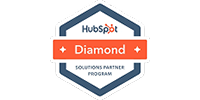Driving Demand Gen Efficiency Through Direct and Indirect Activities
There is a constant battle within every sales and marketing program between what I like to call “direct and indirect” activities. To generate maximum financial efficiency, every dollar invested in a sales and marketing program must be done with surgical precision in order to drive the maximum yield possible. For us at FullFunnel, yield is always measured first by the production of sales qualified leads (SQLs), which are the bedrock for an opportunity pipeline. One of the most common issues that sales and marketing leaders struggle with is how to adequately appropriate capital when there are numerous requests occurring throughout the organization.
To help with this consistent problem, we created two distinct buckets to allocate efforts and initiatives during our planning processes:
Direct Activities: Activities that will directly drive the generation of SQLs. These activities include but are not limited to:
- Outbound prospecting (Relatively low investment if you have the internal teams to carry out these efforts)
- Phone
- Social
- Event Marketing (Requires significant pre-, during, and post-event resources to deliver a healthy ROI)
- Bottom-of-the-funnel digital advertising through search and social channels (Often leads to short-term results, but require significant investments to set up campaigns and spend on ad budget)
- Email marketing to opt-in list of prospects (Must be coordinated to provide clear messaging to prevent prospects from viewing emails as spam)
Indirect Activities: Activities that provide an important structural component within the customer acquisition process that don’t (usually) drive the generation of SQLs within a short- to medium-term timeframe (within 180 days). These activities include but are not limited to:
- Website augmentation and design (diversify client conversion points to support different stages of the buyer’s journey)
- Long- and short-form content (white papers, ebooks, pillar content, case studies, and blogs to rank organically and convert visits into leads)
- Sales enablement material (pitch decks, reference articles, or standard templates to use during sales follow-ups)
- Top- and-middle-of-the-funnel paid search and social campaigns (mixed formats between content and product promotion on Google or LinkedIn)
There are many requests from a sales and marketing organization, especially on the marketing side, which can often be placed into the indirect bucket. While these activities are important, they need to be treated with the right perspective in terms of their ability to drive yield. For example, think about the amount of time and money your organization spends purchasing booths at trade shows, producing marketing flyers, or outfitting your team with company apparel to make your teams stand out at these events. All that time costs money (soft costs) on top of the actual production costs (hard costs) of these efforts, and it can be difficult to gain visibility into the return on investment (ROI) from events.
We know that our ability to drive short-term pipeline results isn’t always impacted positively by these indirect activities, but they still serve as valuable, long-term demand generation tools that must be diligently measured to improve future sales outcomes.
Know Your Return on Deployed Capital
When it comes to analyzing the impact of both direct and indirect activities, one of my favorite questions to ask C-Suite executives of any organization is, “What was your return on sales and marketing capital last quarter?” I ask this question mainly to see the immediate wave of discomfort wash over them as they realize they have no tangible metric or an idea on how to respond. Why? It’s because most businesses are not programmed to think about return on capital as a measurement for efficiency for their organization.
In these cases, businesses that don’t understand their return on deployed capital (RDC) aren’t tracking critical key performance indicators (KPIs) against their respective sales goals. Some of the most common KPIs I emphasize to any C-Suite executives often include cost per opportunity (CPO), cost per lead (CPL), and customer acquisition cost (CAC). Fundamentally, you should be generating at least a 3x return on your RDC on a year-over-year basis. Organizations that fall short of this industry benchmark are likely deploying capital inefficiently, have underperforming sales and marketing teams, or a combination of the two.
To truly elevate your demand gen efforts, you must have insight into your RDC for both direct and indirect activities to ensure you’re generating a greater return than you’re investing in these channels. Otherwise, your organization will continue to operate as a rudderless ship sailing aimlessly toward long-term goals that won’t be reached.
If you think you need to take a closer look at how direct and indirect activities are impacting your sales and marketing programs, please request a consultation.










